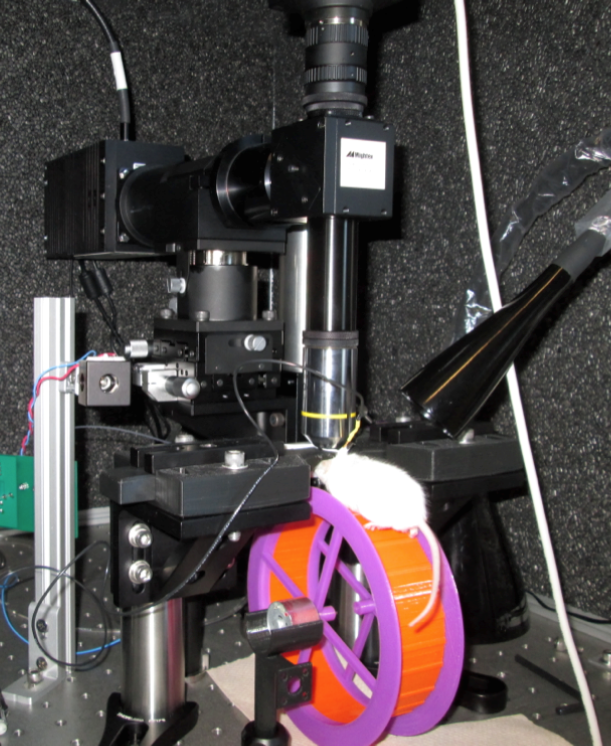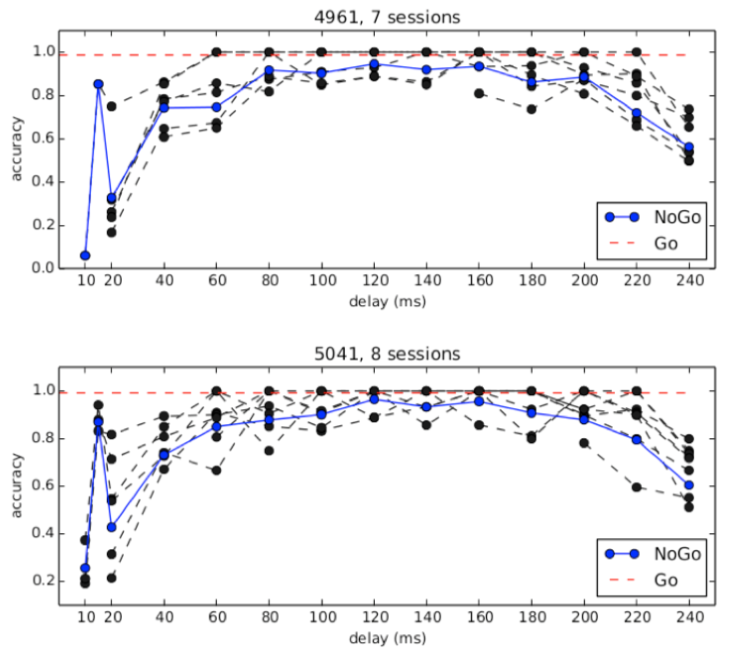Perceptual invariance to the olfactory spatio-temporal code
Edmund Chong & Dmitry Rinberg
Neuroscience Institute, New York University
Spatio-temporal patterns of brain activity are present in a variety of behavioral processes ranging from memory (Pastalkova et al., 2008) to motor preparation (Churchland et al., 2012) and decision-making (Harvey, Coen & Tank, 2012). This encoding of information in distributed sequences of transiently-active neurons, as opposed to stable, static subsets of neurons, leads to vastly different predictions of the computational properties of neural circuits (Maass, Natschlager & Markram, 2002; Buonomano & Maass, 2009). Given the ubiquity of spatio-temporal brain patterns, and the non-trivial consequences on our understanding of information processing in the brain, it is important to uncover the general principles governing the spatio-temporal code.
Our lab studies spatio-temporal codes by directly generating, and manipulating them in the awake, behaving mouse (patterned optogenetics). The mouse olfactory system is ideal for this. Olfactory circuits are well-characterized, and in the olfactory bulb (OB), odors evoke precise spatio-temporal patterns of glomerular activity (Spors et al., 2006). Prior studies using patterned optogenetics in olfaction have focused on characterizing circuit responses (Zhu, Frank & Friedrich, 2013, Haddad et al., 2013). But one pertinent question in the field is how spatio-temporal OB patterns map onto olfactory perception. Multiple studies suggest a massive capacity for the OB code to represent different odors, as animals show perceptual sensitivity to minute differences in OB patterns (Smear et al., 2013; Rebello et al., 2014). Yet, the number of discriminable odors (Bushdid et al., 2014; Meister, 2015) falls well short of the full coding capacity, and odor recognition appears to automatically generalize across possible differences in OB patterns, for example at different odorant concentrations (Uchida & Mainen, 2008).

Figure 1. OASIS Micro System.
Furthermore, degraded OB activity can converge on the same representations in downstream olfactory regions such as piriform cortex (Barnes et al. 2008). This suggests a dimensionality reduction in going from OB coding space to olfactory perceptual space – multiple OB patterns map onto the same, or similar, percepts. Our lab studies the features of OB patterns that olfactory perception is invariant to. The Mightex OASIS system is installed into our rodent behavior setup (Fig. 1).

Figure 2. Accuracy of two mice on discrimination task. Black dashed lines represent performance on each session. Blue line represents average performance.
The OASIS system is compact and user-friendly, with minimal engineering effort required to integrate into our setup. Patterned optogenetic stimulation is delivered by the OASIS onto the OB surface of the head-fixed mouse on a running wheel. Stimulation patterns are controlled programmatically within the API of Mightex Polygon patterned illuminator.
Our preliminary data suggests that mice are sensitive to fine temporal information in the OB code. We trained mice to recognize two-spot patterns in a Go/No-Go task, and manipulated the lag between spots. We demonstrate that mice can learn to discriminate even fine lags of as small as 40ms or less (Figure 2). These results suggest that mice use fine timing information present in spatio-temporal OB activity for olfactory perception. This is in line with previous work showing that ordered sequences of brain cells are active in response to specific choices or stimuli. Perhaps a more important question then is not which brain cells are active, but when they are active. Patterned optogenetics allows us to generate any temporal sequence of activation at will, and observe their effects on behavior, and the Mightex OASIS system is a powerful tool for this purpose.


